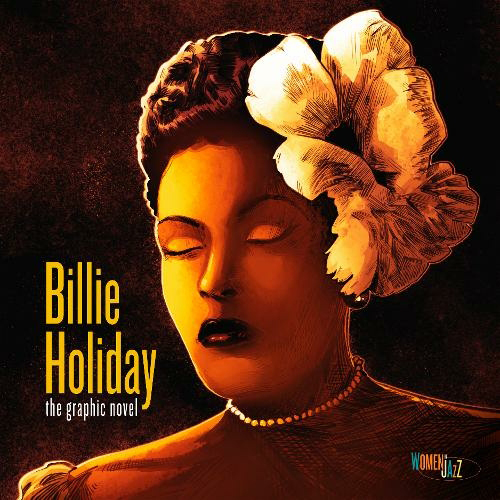
In a creative foreword, Keith Knight shows a teacher educating her pupils about Billie Holiday and how her life is an opportunity to value “the contributions of blacks, Jews, women….” Her biggest hit, “Strange Fruit, was written by Jewish composer Abel Meeropol in the 1930s.
Unless people can be seen and heard, they don’t have an opportunity to contribute. Billie Holiday: The Graphic Novel: Women in Jazz teaches this well. As unnecessarily difficult, discriminatory and oppressive as life was for Billie, whenever Billie was given an opportunity to demonstrate her talent, she passed with flying colours. Agent Moe Frasier, who represented Louis Armstrong, discovered Billie at an “Amateur Night” at the Apollo Theatre (the first venue to showcase black talent) in New York. This led to Billie playing with “Count” Basie and his Count Basie Orchestra. As talented as Billie was, she didn’t sing songs in the same way for each performance, so the band parted ways with her.
Whilst Billie was back “at the goddam bottom” playing “No Colored Allowed” gentlemen clubs, Billie’s talent didn’t go unrecognised for long when Artie Shaw invited her to join his band, which made Billie “the first negro woman to join an all-white orchestra”. In 1946, and releasing “God Bless this Child”, Holiday landed a role in the movie “New Orleans” alongside Louis Armstrong. Billie would be knocked down again and lose her cabaret license, and be sent to the Federal Reformatory for Women for a year for being in possession of narcotics. Following Holiday’s release, through her new agent Ed Fisherman, she made an impressive comeback at Carnegie Hall, where jazz critic Nat Hentoff was sitting in the front row.
Billie Holiday: The Graphic Novel: Women in Jazz explicitly explores how despite the Count Basie Orchestra having many fans beyond the black community, people were uncomfortable with the band using “the public elevator”. Billie couldn’t sit at the bars at the clubs she played at, let alone order a drink. Whilst Billie’s shows were advertised with large, impressive luminous billboards, she was at best given the utility room instead of a dressing room which was provided to other non-black performers. Billie was hindered and punished when she challenged the status quo.
Billie Holiday: The Graphic Novel: Women in Jazz also confronts how Holiday was used as a prostitute, struggled with addictions to alcohol and narcotics, poverty and was let down by men. The only man who this graphic novel says was unconditionally loyal to her was tenor saxophonist and occasional clarinettist Lester Young who she met when she played with him in the Count Basie Orchestra who affectionately called Billie “Lady Day”. When he died, Billie died three months later at just 44 years old in 1959. Billie did everything to escape the “mammy” stereotype, a role she played in the movie “New Orleans”.
Whilst her death received paltry media attention; Billie Holiday: The Graphic Novel: Women in Jazz explores the many posthumous honours and awards Holiday received, including being inducted into the Rock and Roll Hall of Fame in 2000 and Time magazine named “Strange Fruit” as the song of the twentieth century in 1999.
Whilst the lyrics of Holliday’s songs are seldom mentioned throughout this graphic novel, it is impressively succinct. The haunting and unnerving aspects of the society Billie lived in and the personal abuse she suffered is told with dignity whilst avoiding unnecessary gore and discomfort. From the outset, the chronological black and white with purple illustrations captivate the reader whilst flashbacks, including when Billie’s mum, who worked as a housemaid and despite being in poverty, gave her daughter money to buy records, are drawn with gold mixed with black and white. Billie Holiday: The Graphic Novel: Women in Jazz set out to celebrate “the contributions of blacks, Jews, women…” and succeeded.


Be the first to comment